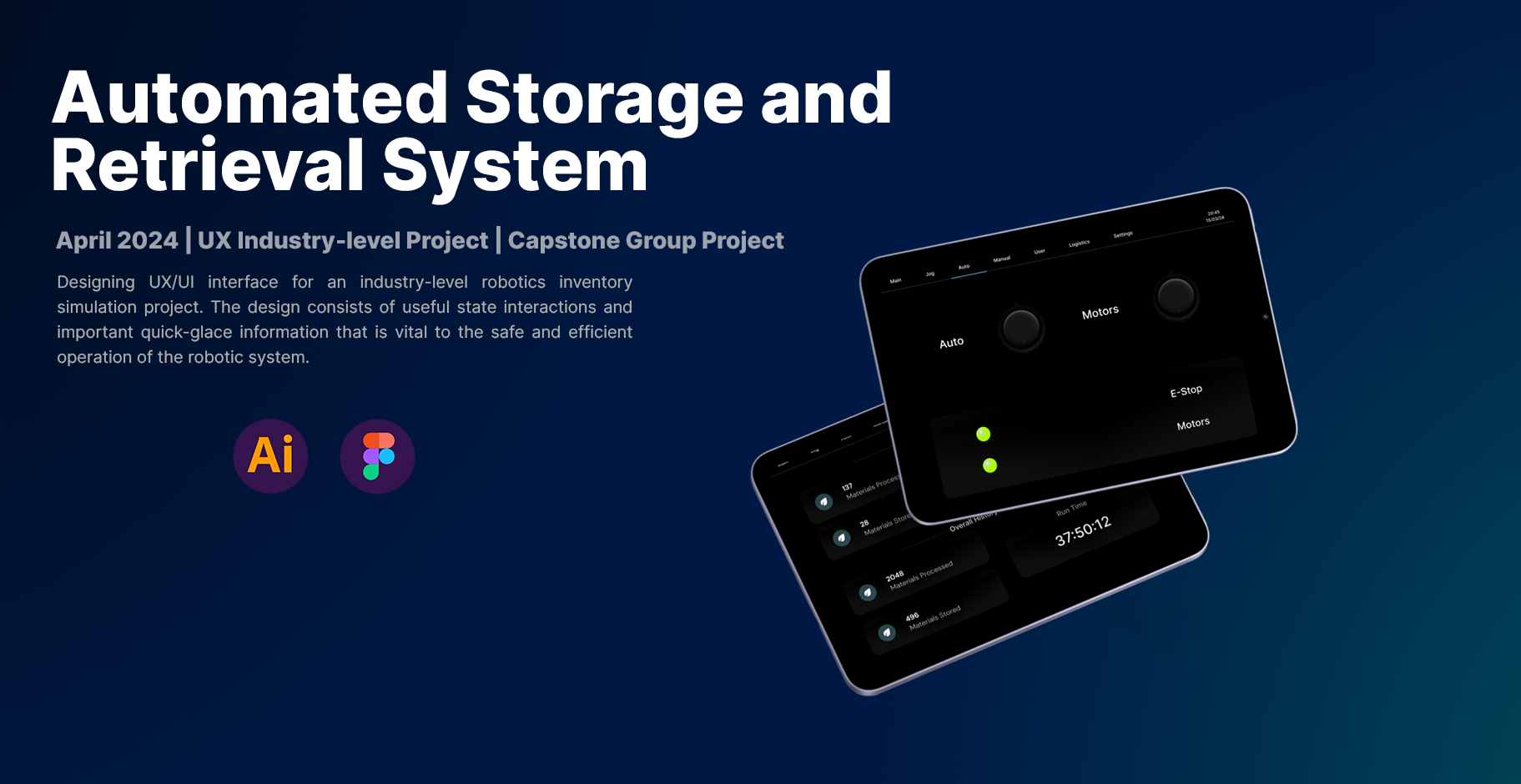
Project Overview
A friend from SAIT's Mechanical Engineering program approached me about collaborating on a project. Initially, I didn't give it much thought, but when they explained that it involved using a robot to pick and place items from a storage system onto a conveyor line using an ABB IRB140 Robot Arm, I was intrigued. The communication systems for the robots utilize PLCs, so I felt that my project management and UX skills could be of great help. And thus began my journey delving into the world of engineers!
Project Statement
This project aims to properly integrate the ASRS system with the IRB 140 work-cell to transport and store raw material in storage trays, while meeting existing safety requirements. They collaborated with other capstone teams, they will integrate the use of the Lab AGV and storage of cartridges containing raw material into the ecosystem. The client has requested the team to update the functionality of the ASRS system, so that it integrates and effectively communicates with the IRB 140 work-cell. The goal of the project is to simulate warehouse material transportation and inventory storage systems.
Objective Tree
Contribution
I have created a Figma design for the user interface (UI) of the HMI (Human-Machine Interface) for the ASRS project. The UI is intended to guide the user through each function screen, such as operating the robot or accessing the settings. They are using GX Designer to code the frontend UI of the HMI and asked me if I could come up with a user-friendly Figma UX for them to reference. At first, I had no clue what they were talking about, but when they explained it to me, I started sketching some low-fidelity prototypes as they explained.
Review 1
Redesign Process
I managed to transform those initial low-fidelity prototypes into high-fidelity designs. Incorporating both their guidance and some of my own ideas, I refined the UI to be even more user-friendly and efficient. These Figma prototypes now serve as comprehensive guides for the GX Designer coding process, ensuring that the frontend UI of the HMI meets both functionality and usability standards.
The Emergency Stop (E-Stop), Motors, and Manual LED buttons change colour based on their external inputs. The user is also able to toggle the state of the manual or automatic process or the power going to the motors with ease from the HMI screen.
Home Page
The Home Page shows the first thing a new user should see upon booting up the HMI system. There are lights that change colour base on their status of being on or off. The status of these indicators may be externally changed and it is important to have that information in front of the user at most times.
Auto Page
In this page the user can toggle the state of both the motors and the automatic robot function.
Manual Page
This page is similar to the Auto page except the function of the robot is slower and can be used for testing.
Signed In User Page
Displays the current user and session details.
Signed Out User Page
Prompts the user to log into an account.
Logistics Page
Shows logistics of the operation of the system. Useful for maintenance.
Conclusion
This collaborative journey has been both challenging and rewarding. Designing for something outside of my degree field proved to be both a challenge and a delight. It pushed me to think outside of my comfort zone and explore new concepts. Through teamwork and perseverance, we've crafted a user-friendly interface that meets the needs of our project. As I continue to work on the remaining pages, I'm excited to see the final product come together. Stay tuned for more updates on our progress!